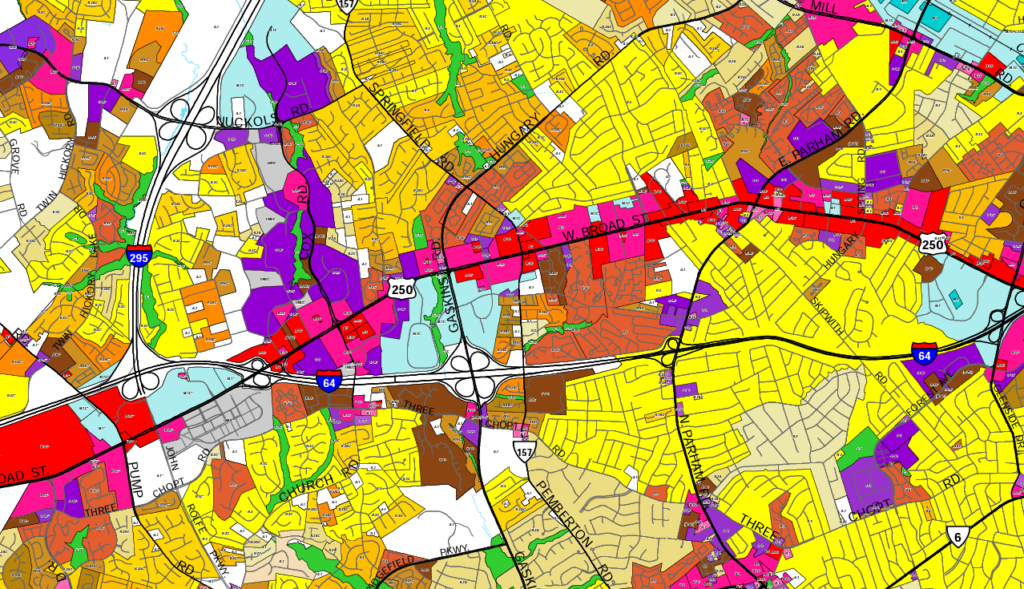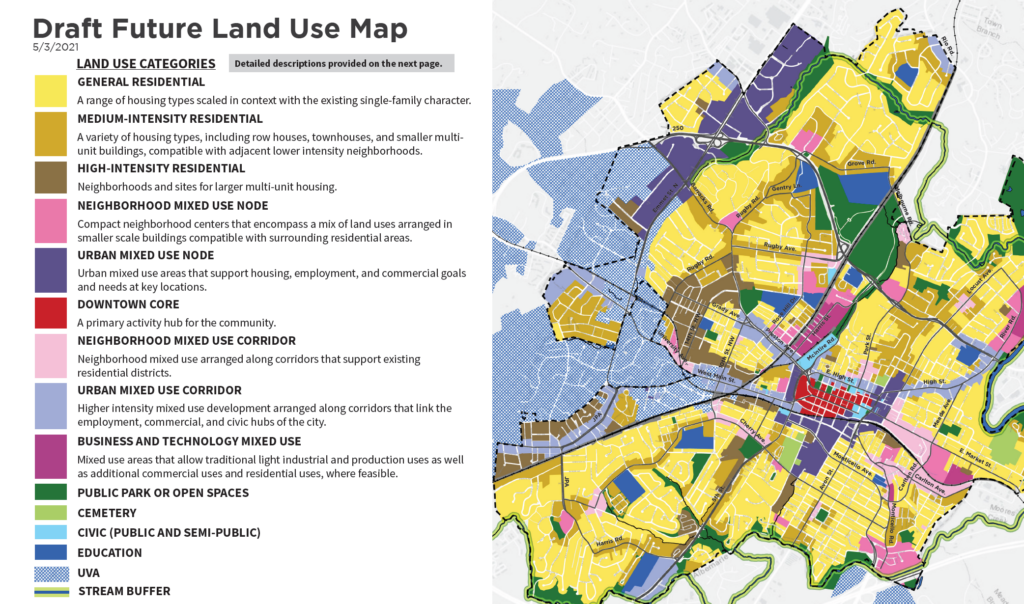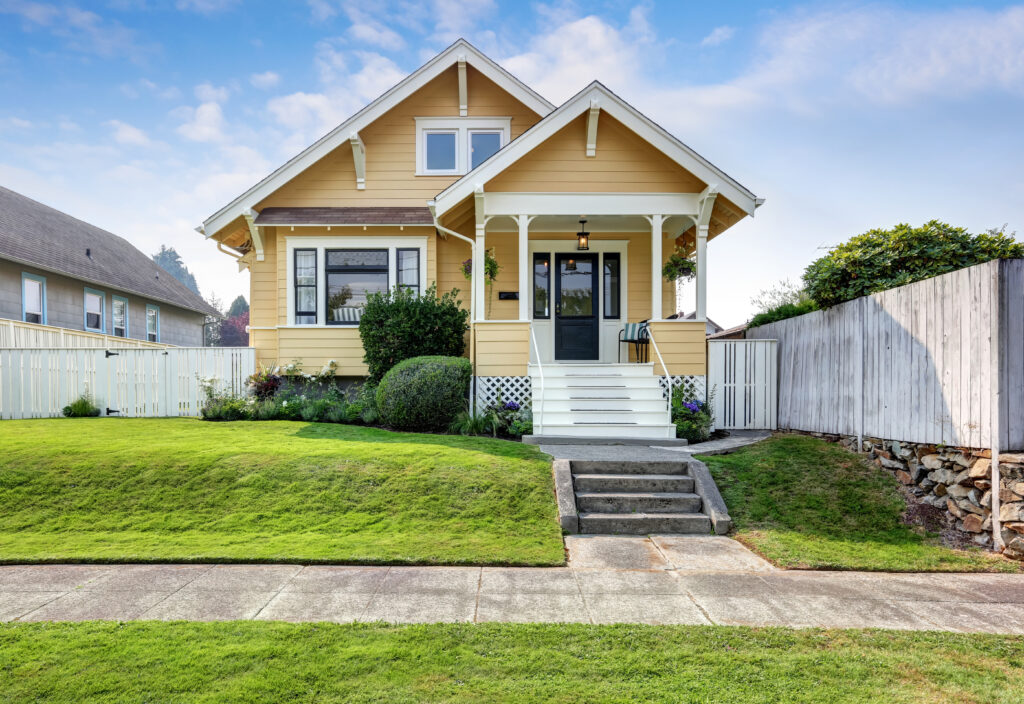What is Zoning?
Zoning is a regulatory tool that local governments use to determine how land can be used and developed within their boundaries. It is guided by each locality’s comprehensive plan, which lays out a community’s aspirations for how it wants to develop and grow over time.
This toolkit will cover several important topics, including the history of zoning both in the U.S. and in Virginia specifically, how zoning works, and the effects it has on housing affordability.

What’s land use?
Land use is what it sounds like—how a piece of land is being used, or what is built on it. There are typically six main types of land use:
- agricultural
- commercial
- industrial
- recreational
- residential
- transportation
These land use types can be defined even further by the intensity and mix of uses.
Zoning and land use often get confused. Zoning is the tool used to control land use based on what a community has decided through the comprehensive planning process. This process eventually results in the future land use map, which shapes future zoning changes and development.

Why does zoning matter to housing affordability?
With zoning, localities can control the supply of housing. They can regulate the amount of housing allowed in a certain area, its size and height, and even its look. These regulations impact housing developers’ budgets and the prices they need to set to make a profit.
For example, a residential zoning district may only allow for one home on a two-acre lot. For homebuilders, the high cost to cover both the land requirements and the construction necessitates building a larger, more expensive house to make a profit on development.

These requirements can make it difficult for homebuilders to produce smaller homes, which are often starter homes or downsizing options for seniors. For multi-family developers, density and height restrictions can severely limit their ability to produce the amount of rental housing that communities desperately need. But more often than not, localities have zoned out denser housing options like duplexes. This results in single-family detached being the predominant type of housing in their communities.

Building codes matter too!
Even if a locality’s zoning allows for high-density multi-family housing, state or local building codes can also mandate expensive and inefficient design and construction practices. This can make resulting housing unaffordable and unattractive. Learn more about this phenomenon in our May 2023 xChats webinar, The Single-Stair Case.
Zoning and building codes are both tools that can help or hinder equitable development in communities. Understanding their function and historic use is crucial to understanding how they interact with housing affordability today.
For more information on how zoning impacts housing affordability, continue reading in our section on Zoning and Housing Affordability.